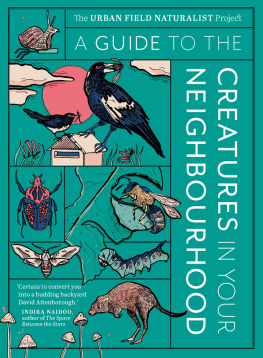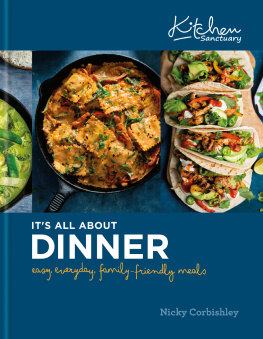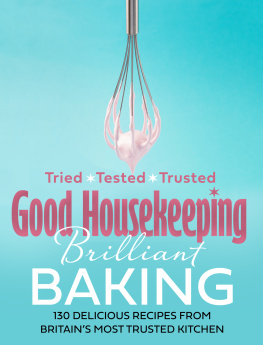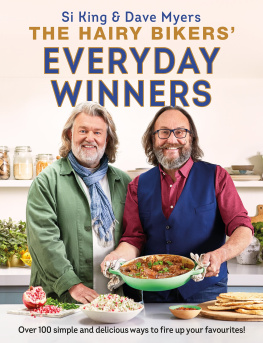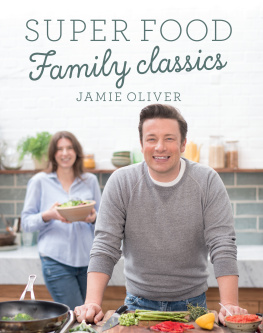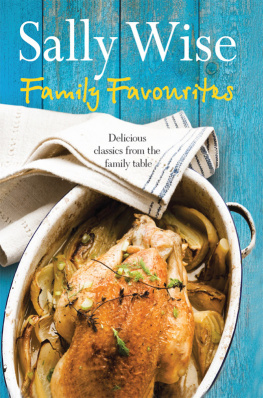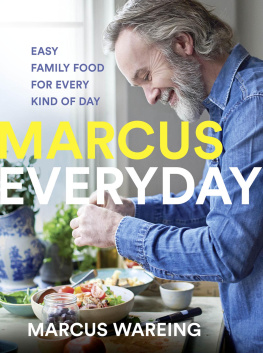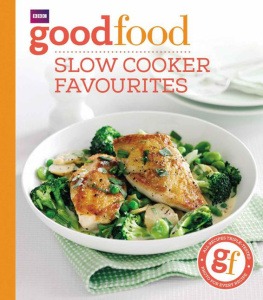

urbanfieldnaturalist.org
The Urban Field Naturalist Project is a collaboration between experts in the life and environmental sciences, design and digital technology who are dedicated to helping people notice wildlife in urban environments. It is led by Associate Professor Thom van Dooren (School of Philosophical and Historical Enquiry, University of Sydney and Oslo School of Environmental Humanities, University of Oslo), Professor Dieter Hochuli (School of Life and Environmental Sciences, University of Sydney), Dr John Martin (Institute for Science and Learning, Taronga Conservation Society Australia) and Zo Sadokierski and Dr Andrew Burrell (School of Design, University of Technology Sydney).
This book was written on the ancestral lands of the Eora, Darug and Gundungurra nations. We acknowledge that Aboriginal and Torres Strait Islander peoples are custodians of Country around Australia, pay our respects to Elders past and present, and acknowledge that sovereignty was never ceded.
We also recognise the wider environments in and amongst which we live, and recognise that the decisions and actions we make today, no matter how small, will have consequences now and into the future.
CONTENTS
GUIDE TO CROWS
Watching the smartest birds in the room
GUIDE TO SNAILS
Unseen and underappreciated
GUIDE TO IBISES
Bin chickens and their cousins
GUIDE TO COCKATOOS
The black, the white and the grey
GUIDE TO STARING AT FLOWERS
Studying plant sex
GUIDE TO LESSER-KNOWN POLLINATORS
A whos who of flower fertilisation
GUIDE TO HOVERFLIES
In case you thought they were bees
GUIDE TO BATS
Big, small and fruity
GUIDE TO COMMON BIRDS
And their antics
GUIDE TO DEADLY AUSTRALIAN ANIMALS
Should you ever go outside again?
GUIDE TO MAMMALS
The good, the unfortunate, the cute and others
GUIDE TO LIZARDS
Our sun-loving neighbours
AN INVITATION INTO OUR
FASCINATING WORLD
H ave you ever stopped and taken the time to look closely at the miniature world of activity around a flower, the winged comings and goings of an array of visitors? Have you ever wondered how the cockatoos and ravens in our cities got so good at accessing all sorts of strange foods, from the contents of household bins to the rock-hard dog biscuits theyve learnt to soak in the birdbath to make more palatable? Have you ever seen a wasp dragging a huntsman spider around behind her and asked yourself, Whats going on here?
These are some of the weird and wonderful urban wildlife dramas playing out all around us, every day, in backyards and parks, on balconies and in courtyards, in disused industrial areas, and those little patches of green that hug the sides of highways. In cities large and small, all over Australia and around the world, diverse animals, plants and fungi are making their homes among us, in many cases adapting their tried-and-true ways of life to changing conditions that bring both challenges and opportunities. If we pay attention, each of these creatures offers us an invitation into a unique way of life, to observe the processes of growth and decay, of communication and sensation, going on right under our noses. This book aims to provide a guide of sorts into these remarkable worlds, helping you make sense of them, share them and, perhaps most importantly of all, appreciate them in new and richer ways.
Have you ever seen a wasp dragging a huntsman spider around behind her and asked yourself, Whats going on here?
At the heart of this book is an effort to describe and playfully explore what it might mean to be an urban field naturalist today, in the 21st century. This is a time when so much of our natural world has already been lost, and so much of what remains is threatened. The escalating realities of climate change, human population growth, urbanisation and agricultural intensification are driving the mass extinction of all kinds of species around the world. Alongside these disturbing unravellings of life, a seemingly relentless process of habitat loss is ticking on, much of it driven directly or indirectly by the expansion of the urban places that most of us call home. At this time, when we perhaps need to connect with the natural world more than ever, many of us feel increasingly cut off from it. What possibilities might the very best aspects of the European naturalist tradition which began during the Enlightenment in the 18th century and reached its peak in the 19th century along with an appreciation of Cultural Knowledge of the natural world, have to offer for our time?
Our effort to explore this question is centred on passionate immersion in the lives and worlds of other creatures. While the stories and approaches we have included in this book are grounded in the many insights produced by the careful study of nature, our aim is to stretch and reimagine what has become the standard scientific way of thinking and talking about the natural world. Inspired by the naturalist tradition, this book seeks to cultivate our capacities for curiosity and wonder, while working towards a richer appreciation of the non-human world we are a part of and that sustains our lives.
In an important way, we have deliberately distanced this book from the rapidly growing field of citizen science. Most citizen science projects focus primarily on data collection and cataloguing for example, asking people to go out into their environment to identify and count birds or insects. When well designed, these can be immensely valuable activities for everyone involved, including for researchers, who benefit greatly from a large, distributed, often passionate group of observers. Some of us are involved in these kinds of projects in an ongoing way, but our aim with this book is a bit different. We want to prioritise wonder over data. Both will be essential facets of any meaningful response to the challenges of our time, but the former seems to us to be in increasingly short supply.
We want to prioritise wonder over data.
Our focus is therefore not on counting creatures, but on exploring what theyre up to and why, delving into their remarkable lives in a way that might produce a fuller appreciation of who they are and why they matter. Our hope is that having come to know a bit more about a particular creature say, a hoverfly or garden snail and its life, the next time you come across that animal you might encounter it in a new kind of way, despite having undoubtedly crossed paths with it on innumerable earlier occasions.

